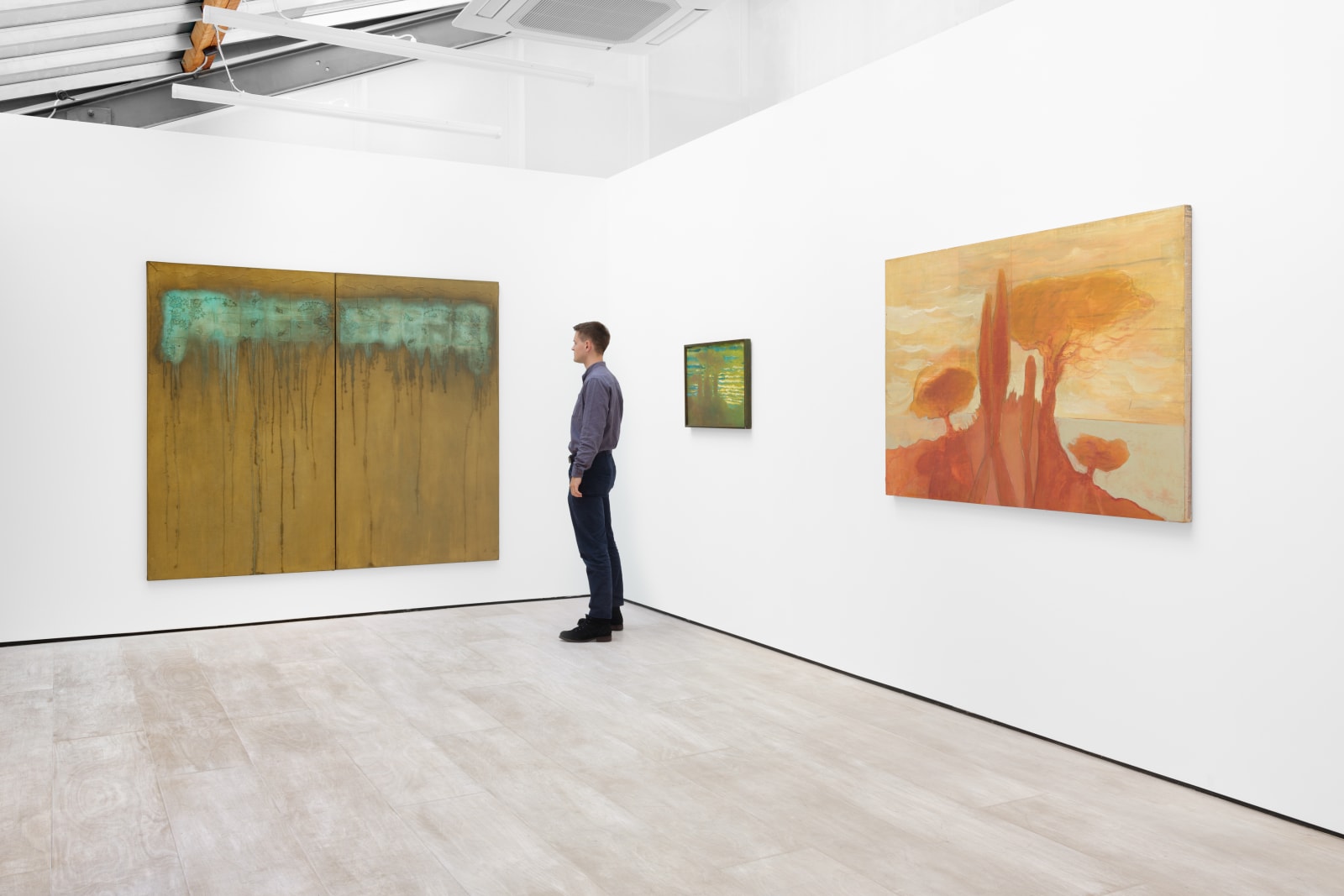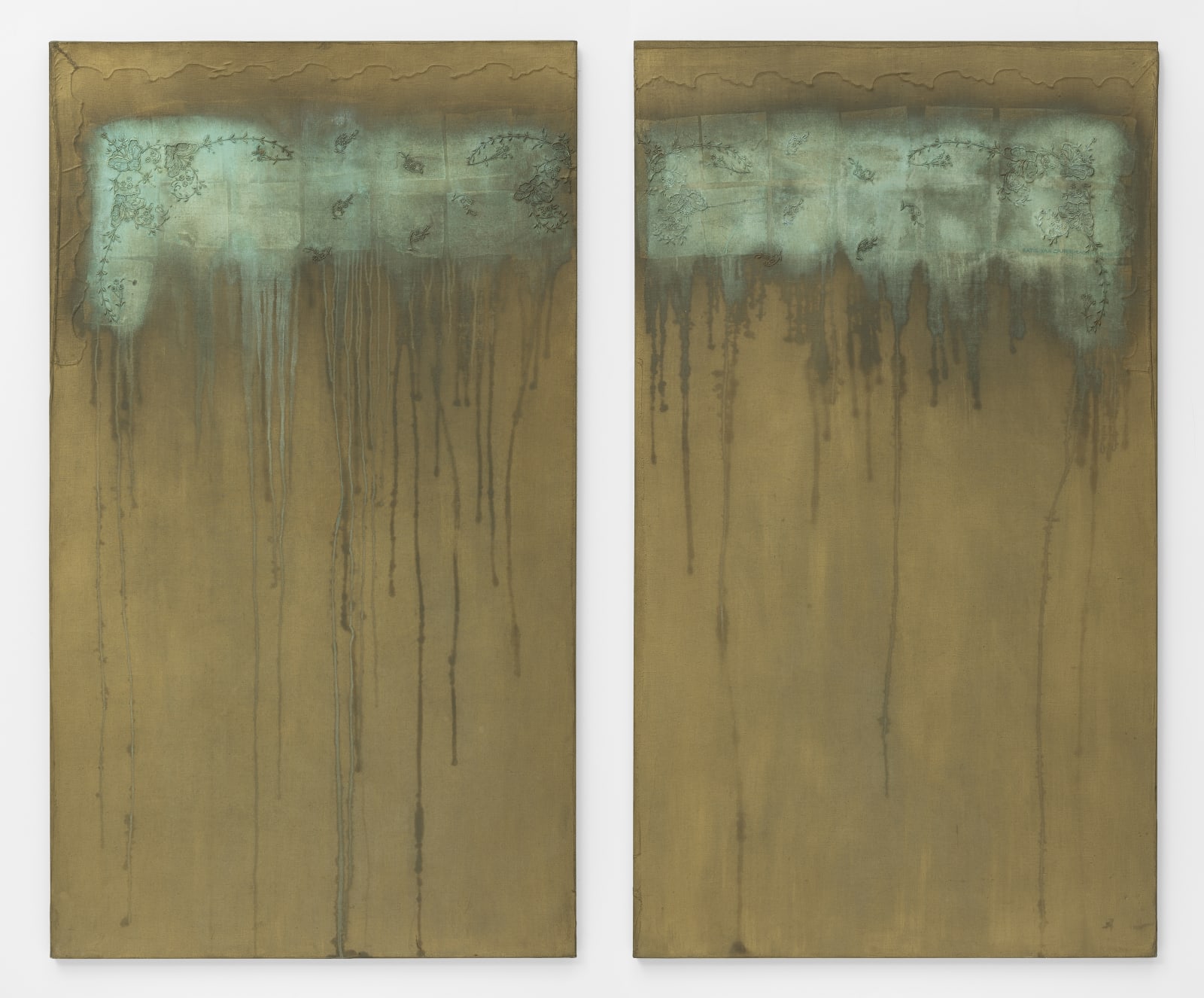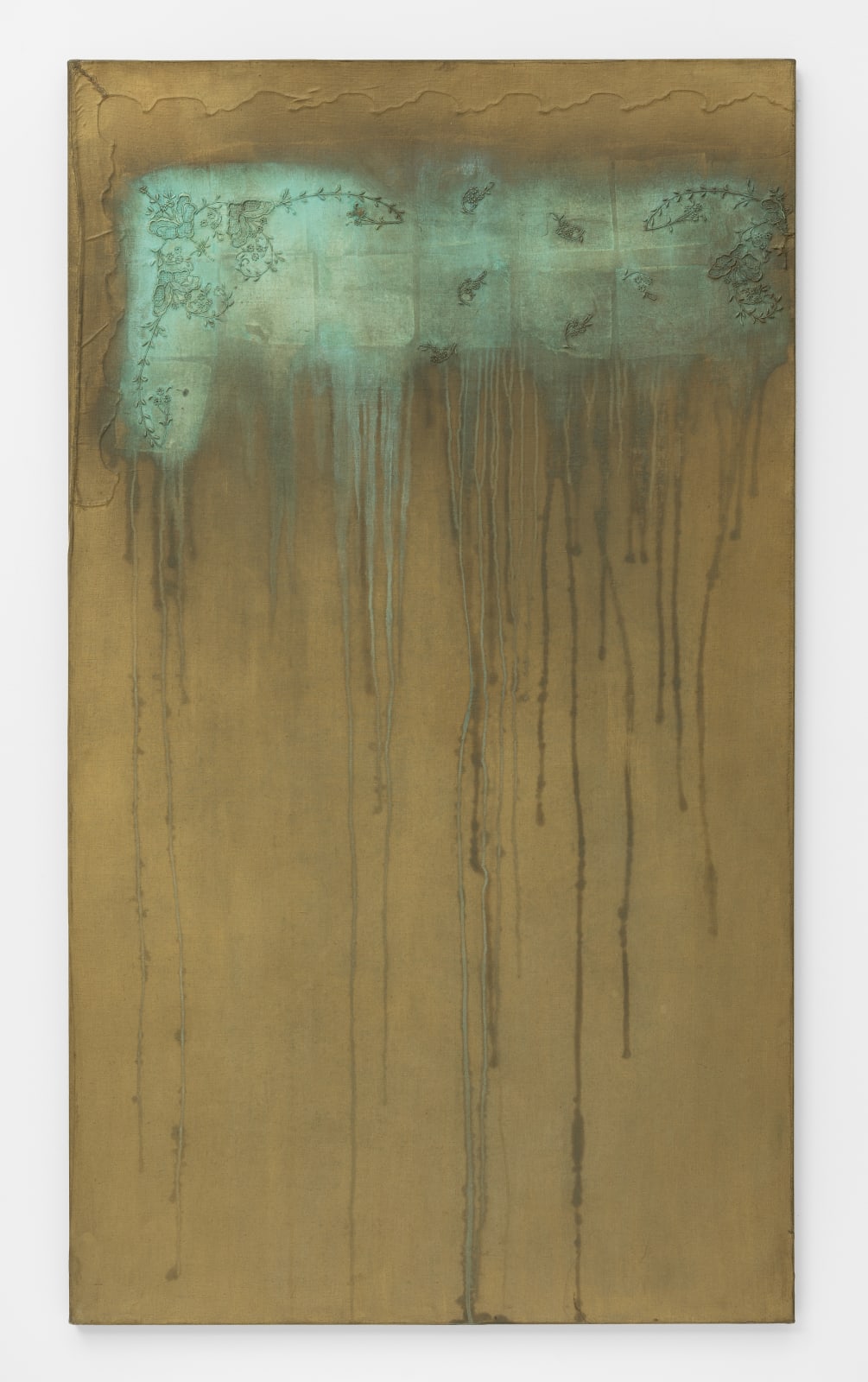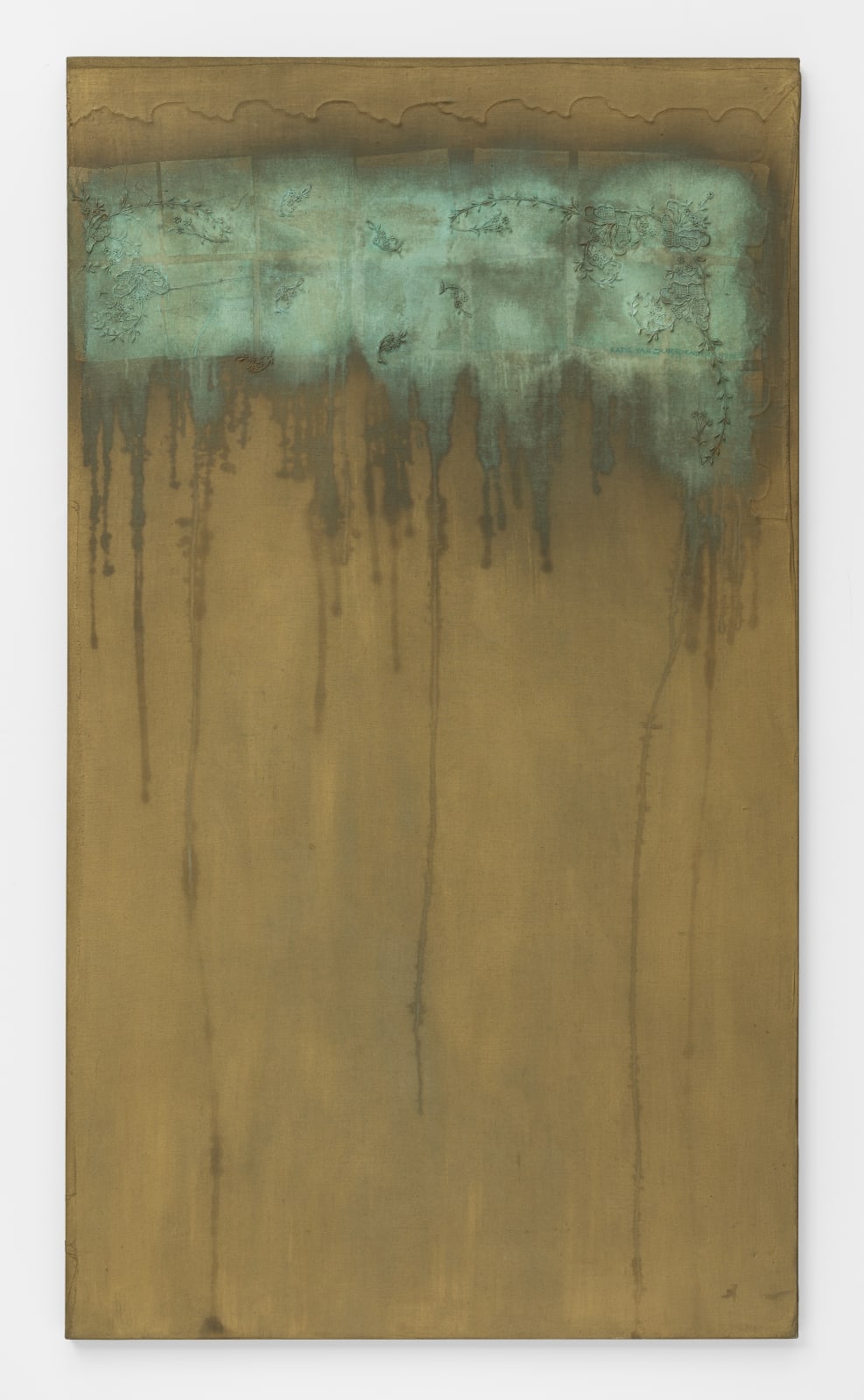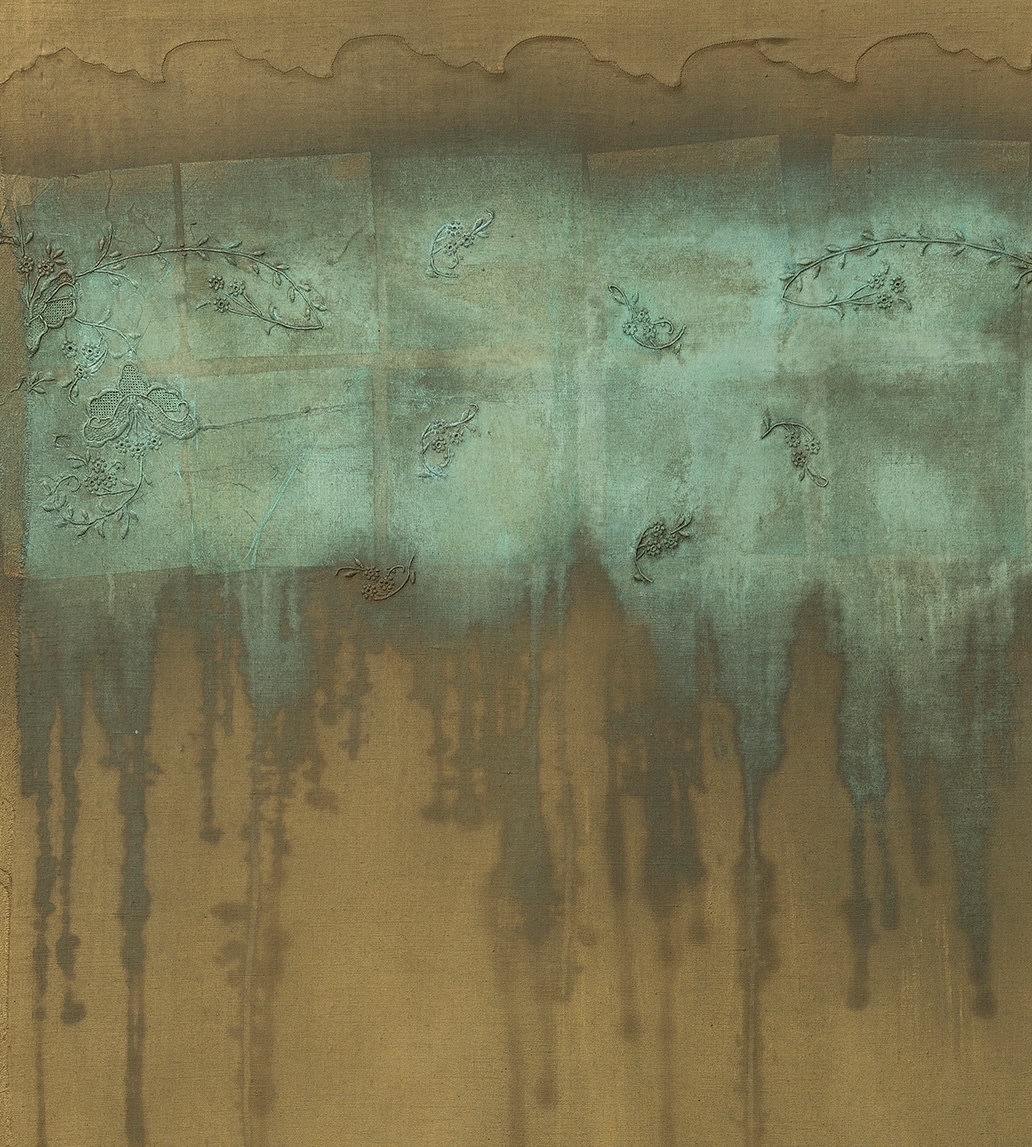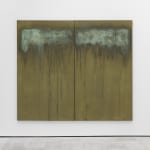Katie van Scherpenberg Brazilian, b. 1940
Portal, 1999
Bronze and copper oxidation, embroidered bed sheets on canvas
2 modules
109.5 x 192 cms
43 1/8 x 75 5/8 inches
109.5 x 192 cms
43 1/8 x 75 5/8 inches
Series: Mamãe prometo ser Feliz
Signed & dated on reverse
Further images
Having spent many years on the remote Santana Island in the Amazon delta without easy access to art supplies, Katie van Scherpenberg learnt how to incorporate ‘non-art’ materials into her...
Having spent many years on the remote Santana Island in the Amazon delta without easy access to art supplies, Katie van Scherpenberg learnt how to incorporate ‘non-art’ materials into her practice. She frequently used natural pigments from the earth, or the river, alongside found objects. In the 1990s, due to a financial crisis that swept through Brazil the artist once again found it difficult to source painting supplies. In a series begun during that period, Mamãe Prometo ser Feliz (Mummy I Promise to be Happy), van Scherpenberg produced works that experimented with the use of linens and sheets as her painting supports. The linen was first sourced from her own trousseau, and was also latterly donated by other women. The linens are symbolic of the domestic labour carried out by women within patriarchal society and thus van Scherpenberg’s works in this series assume a subversive meaning as she transforms the embroidered bed sheets into functional, work materials.
Van Scherpenberg often experiments with different metals, using various oxides in her abstract works. For ‘Portal’, the artist has used copper and bronze oxides as pigmentation, a choice intended to produce unexpected visual effects on the surface of the large-scale diptych. As Kiki Mazzucchelli writes, “The bright greenish copper stains on the top end of each canvas drip down over the bronze-coloured background, creating organic lines that vertically cross the painting. Through the chemical reactions at play, time and metamorphosis become the matter of painting”. With this organic element, van Scherpenberg endows the materials with the agency to alter the appearance of the painting. The natural process of metallic corrosion that stains the material sits at odds with the quaint, domestic embroidery along the top of the sheets; in this way, the artist draws attention to the dichotomies of indoors and outdoors, public and private.
This work also places itself in dialogue with van Scherpenberg’s interventions on the landscape, or ‘landscape paintings’ such as Jardim Vermelho, 1984 and Furo, 2004. In these works, the artist focuses on applying pigment directly onto the ground in her physical surroundings; subsequently, time and the natural elements begin to change the work and make it gradually disappear. This is not dissimilar to the way in which ‘Portal’ is subjected to the effects of time and the air around it. With this connection to the artist’s performance work (or interventions), we are reminded that van Scherpenberg’s painting practice is inseparable from time and the natural world.
Van Scherpenberg often experiments with different metals, using various oxides in her abstract works. For ‘Portal’, the artist has used copper and bronze oxides as pigmentation, a choice intended to produce unexpected visual effects on the surface of the large-scale diptych. As Kiki Mazzucchelli writes, “The bright greenish copper stains on the top end of each canvas drip down over the bronze-coloured background, creating organic lines that vertically cross the painting. Through the chemical reactions at play, time and metamorphosis become the matter of painting”. With this organic element, van Scherpenberg endows the materials with the agency to alter the appearance of the painting. The natural process of metallic corrosion that stains the material sits at odds with the quaint, domestic embroidery along the top of the sheets; in this way, the artist draws attention to the dichotomies of indoors and outdoors, public and private.
This work also places itself in dialogue with van Scherpenberg’s interventions on the landscape, or ‘landscape paintings’ such as Jardim Vermelho, 1984 and Furo, 2004. In these works, the artist focuses on applying pigment directly onto the ground in her physical surroundings; subsequently, time and the natural elements begin to change the work and make it gradually disappear. This is not dissimilar to the way in which ‘Portal’ is subjected to the effects of time and the air around it. With this connection to the artist’s performance work (or interventions), we are reminded that van Scherpenberg’s painting practice is inseparable from time and the natural world.

